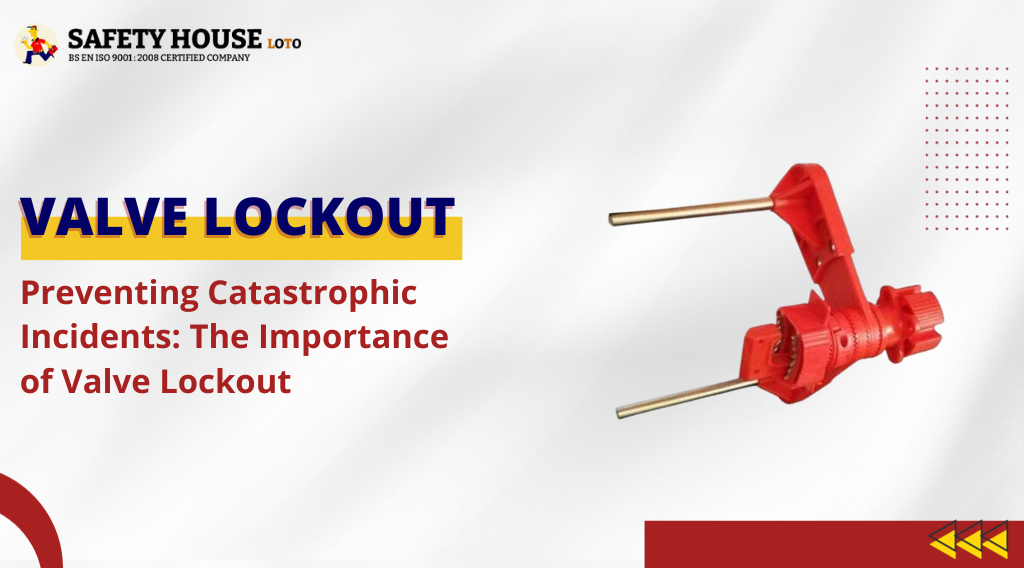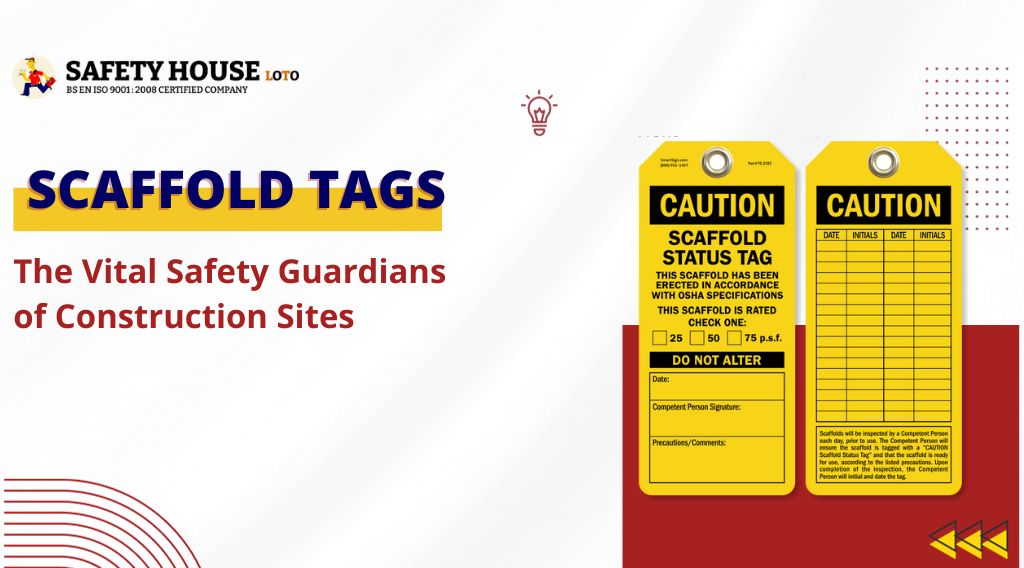
Preventing Catastrophic Incidents: The Importance of Valve Lockout
In the intricate dance of industry, where towering machines hum and energy pulses through a labyrinth of pipes, safety waltzes as the lead partner. One misstep, one errant movement, and the harmony erupts into a cacophony of chaos. In this intricate ballet, valves play a crucial role, controlling the flow of vital fluids – liquids and gases that can power cities, fuel production, or, if uncontrolled, unleash devastation. This is where valve lockout steps in, a vital safety measure that can prevent catastrophic incidents before they become headlines.
The Grim Reality: Why Valve Lockout Matters
Industrial accidents involving uncontrolled valve operations are not mere statistics; they are grim reminders of the potential consequences of complacency. From fiery explosions at chemical plants to toxic gas leaks causing mass evacuations, the dangers are real and often fatal. In 2013, a ruptured pipeline in West Virginia sparked a gas explosion that leveled homes and claimed nine lives. In 2019, a faulty valve at a fertilizer plant in Iowa triggered a deadly explosion, wiping out entire buildings and injuring dozens. These tragedies highlight the urgency of robust safety protocols, where valve lockout stands as a sentinel against such incidents.
Understanding Valve Lockout: More than Just a Padlock
Valve lockout goes beyond simply adding a padlock to a valve handle. It’s a comprehensive safety program that involves identifying and isolating energy sources, applying appropriate lockout devices, and verifying their effectiveness. This not only ensures that valves remain in their desired positions during maintenance or repair activities but also prevents accidental activation, protecting both personnel and equipment.
Valve lockout isn’t just a safety measure; it’s a treasure trove of benefits that trickle down to every corner of your industrial operation. It’s like planting a safety seed that blossoms into a bountiful harvest of:
A Feast of Benefits for Every Industry: Valve Lockout
- Enhanced Worker Safety: This is the crown jewel of the valve lockout kingdom. It minimizes the risk of accidental valve operation, protecting your workforce from hazardous energy releases, toxic leaks, and fiery explosions. No more sleepless nights worrying about your team’s well-being!
- Reduced Downtime and Increased Productivity: Say goodbye to scrambling after accidental valve openings that halt production. Valve lockout ensures planned and controlled maintenance, minimizing downtime and keeping your machines humming like a well-oiled symphony. More uptime means more output, more satisfied customers, and bigger smiles all around.
- Boosted Compliance and Lowered Costs: Dodging hefty fines from regulatory bodies is a sweet perk. Valve lockout adherence ensures compliance with safety regulations, saving you the financial sting of non-compliance and potential lawsuits. Think of it as an investment in peace of mind and a lighter wallet.
- Improved Equipment Lifespan: Uncontrolled valve operation is like throwing your equipment into a gladiator arena. Valve lockout shields your machinery from unnecessary wear and tear, extending its lifespan and saving you costly replacements. It’s like gifting your equipment a rejuvenating spa day, keeping it young and vibrant for years to come.
The Valve Lockout Arsenal: Tools for Every Situation
Valve lockout manufacturer in Delhi, and across the globe, offer a diverse range of devices to cater to different valve types and operational needs. These include:
- Ball valve lockouts: Designed for securing ball valves, with options for various handle sizes and locking mechanisms.
- Gate valve lockouts: These robust devices fit onto the valve handles and prevent unauthorized opening or closing.
- Butterfly valve lockouts: Specially designed for butterfly valves, they effectively immobilize the handle.
- Lockout hasps and tags: These versatile tools allow multiple padlocks to be used on a single valve and provide clear identification of lockout procedures.
Choosing the right valve lockout manufacturer in Delhi requires careful consideration of your specific industry, valve types, and safety protocols. Look for manufacturers with a proven track record, certifications, and adherence to international safety standards.
Beyond Tools: Embedding Valve Lockout in Your Safety Culture
While the right tools are essential, valve lockout’s true effectiveness lies in integrating into your safety culture. This involves:
- Training: Thoroughly train all personnel on lockout procedures, identifying different valve types and the appropriate devices.
- Audits and inspections: Regularly conduct audits to ensure compliance with lockout protocols and identify potential hazards.
- Emergency preparedness: Integrate valve lockout procedures into emergency response plans and drills.
By fostering a culture of safety and vigilance, valve lockout transforms from a mere procedure into a powerful shield against preventable incidents.
Valve Lockout: An Investment in Safety, a Guarantee for Progress
Investing in valve lockout is not an expense; it’s an investment in safety, in human lives, and in the continued smooth operation of your enterprise. It’s a guarantee that the intricate dance of industry can continue uninterrupted, free from the discordant notes of catastrophe. So, make valve lockout a cornerstone of your safety culture, choose the right valve lockout manufacturer in Delhi or your region, and ensure that progress flows unimpeded, guided by the steady rhythm of safety.
Remember: Valve lockout is not a one-time fix; it’s a continuous commitment to safety. By prioritizing valve lockout and nurturing a safety-conscious culture, you can prevent incidents, protect lives, and ensure that your organization hums to the tune of success, without ever risking a catastrophic finale.

Scaffold Tags: The Vital Safety Guardians of Construction Sites
Construction sites are bustling hubs of activity, but amidst the controlled chaos, safety remains paramount. Workers navigate a complex landscape of materials, equipment, and potential hazards, and every step must be taken to ensure their well-being. In this intricate safety ecosystem, scaffold tags play a crucial role, silently standing guard as vital safety guardians.
What are Scaffold Tags?
Scaffold tags are small, yet potent safety devices attached to scaffolding components. They serve as visual indicators, communicating crucial information about the scaffold’s load capacity, weight limitations, and inspection status. Typically made of durable materials like weatherproof plastic or metal, scaffold tags come in various colors and designs to easily convey specific messages.
Why are Scaffold Tags Important?
The importance of tags cannot be overstated. They function as the first line of defense against potential accidents and injuries on construction sites. Here’s how they contribute to enhanced safety:
- Clear and concise communication: Scaffold tags provide instant visual information about the scaffold’s capabilities and limitations. This eliminates any ambiguity or confusion that could lead to misuse or overloading.
- Promotes adherence to safety regulations: Different tag colors and symbols correspond to specific safety standards and regulations. This ensures that workers are readily aware of the guidelines they need to follow while working on the scaffolding.
- Facilitates regular inspections: Scaffold tags often include spaces to record inspection dates and findings. This promotes a culture of regular maintenance and timely identification of potential hazards.
- Raises safety awareness: The constant presence of scaffold tags is a constant reminder of the importance of safety. This keeps workers vigilant and reinforces safe practices throughout the construction process.
Types of Scaffold Tags
Scaffold tags come in a variety of types, each serving a specific purpose. Some of the most common ones include:
- Load capacity tags specify the maximum weight the scaffold can safely support. Exceeding this limit can lead to catastrophic failure, hence the critical role of these tags.
- Inspection tags: These tags document the date of the last scaffold inspection and any things to note that were identified. Regular inspections are essential for maintaining the integrity of the scaffolding.
- Do not climb tags: These tags serve as a clear warning, prohibiting unauthorized from climbing on the scaffolding. This helps to prevent falls and other accidents.
- Out-of-order tags: These tags identify scaffolding components that are defective or unsafe for use. This prevents workers from inadvertently using damaged equipment and incurring risks.
Choosing the Right Safety Tags Manufacturer
With the safety of workers at stake, choosing the right scaffold tag manufacturer is crucial. Look for a manufacturer that:
- Uses high-quality materials: The tags should be durable and weatherproof to withstand harsh construction site conditions.
- Offers a variety of tags: The manufacturer should cater to diverse needs with a range of tags addressing different safety aspects.
- Complies with safety regulations: Ensure the tags comply with relevant safety standards and regulations in your region.
- Provides clear and easy-to-understand tags: The information on the tags should be unambiguous and readily understandable by workers.
Investing in Safety, Investing in Lives
Scaffold tags may seem like small,ordinity objects, but their impact on construction site safety is undeniable. By providing clear and concise information, they empower workers to make informed decisions and navigate the complexities of scaffolding with confidence. Remember, safety is not an expense; it’s an investment in the well-being of your workforce and the long-term success of your construction projects. So, prioritize scaffold tags as vital safety guardians, and watch your construction site transform into a haven of safety and productivity.
Additional Tips for Scaffold Safety
- Always follow manufacturer instructions for assembling and using scaffolding.
- Never overload a scaffold beyond its rated capacity.
- Inspect scaffolds regularly for damage or defects.
- Wear appropriate personal protective equipment (PPE) when working on or around scaffolding.
- Train workers on proper scaffold safety procedures.
By following these tips and making scaffold tags an integral part of your safety protocols, you can create a safer construction site for everyone involved.
I hope this blog post has been informative and insightful. If you have any questions or suggestions, please feel free to leave a comment below.

